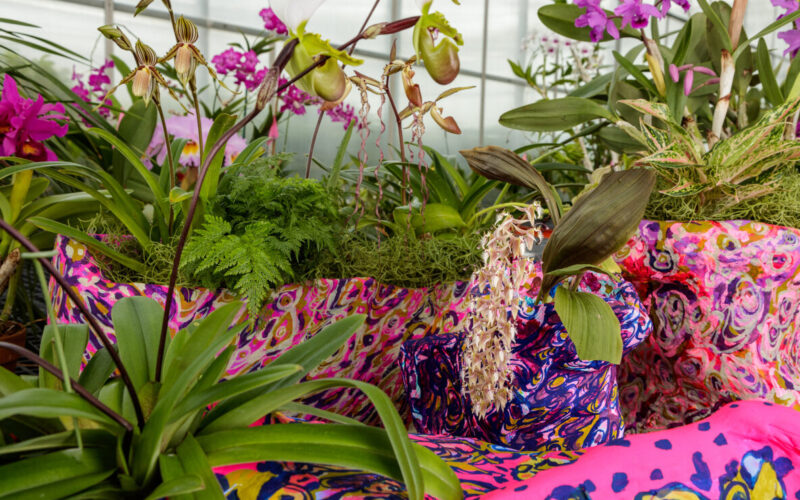By Marisa Scalera, Landscape Architect
Come see this unique commissioned artwork alongside many of the plants that inspired it in The Future of Orchids: Conservation and Collaboration, open from Jan. 27 through April 28, 2024, in the Kogod Courtyard of the Smithsonian American Art Museum and National Portrait Gallery.
The future of orchids is lush, bold, inspiring, and something that we can realize together. This year’s orchid exhibit, The Future of Orchids: Conservation and Collaboration, takes visitors on a deep dive into the weird and wild world of orchids, highlighting large-scale artworks that invite visitors to imagine the future of orchids, and sharing how we can all work together for orchid conservation.

With an estimated 30,000 species, the Orchidaceae family is one of the largest and most diverse families in the plant kingdom. Orchids’ clever adaptations include bright colors, showy patterns, and unexpected forms that entice pollinators, foster genetic diversity, and improve the plants’ ability to survive. As each species has adapted to its unique habitat and pollinators, the orchid family has grown to include wildly varying species: everything from Angraecum magdalanae which emits a spicy fragrance at night to attract nocturnal hawk moths, to Bulbophyllum phalaenopsis with its gargantuan seven-foot-long leaves and stinky flowers that smell like rotting meat to attract flies for pollination.
One of the exhibit’s most unique features had SG staff collaborating with the Smithsonian’s Digitization Program Office (DPO) to capture fleeting details of these one-of-a-kind living collection items. The DPO team worked with SG’s Living Collections team to create 3D scans of ten orchids from SG’s Orchid Collection. These 3D scans now serve as a permanent record of an ephemeral moment in time, a way to observe orchids’ morphological structures long after their blooms have wilted and to track the condition of these plants and their evolution over time.
More information, link:
https://gardens.si.edu/learn/blog/the-future-of-orchids-conservation-and-collaboration/




